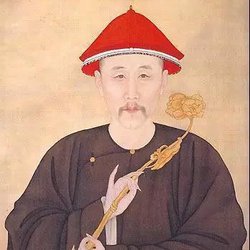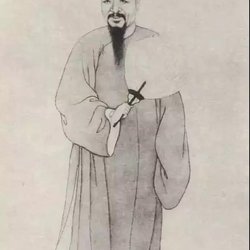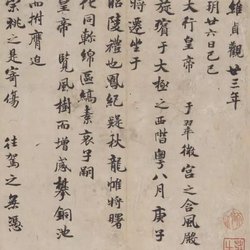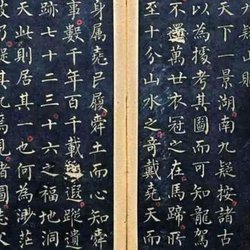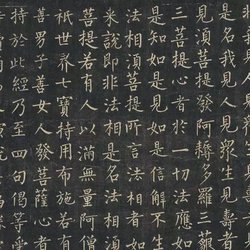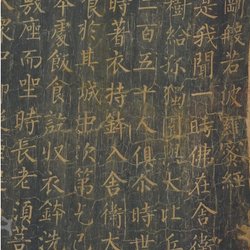In the third year of Yuan Dynasty, that is, 1310 AD, Zhao Mengfu was fifty-seven years old. In September of this year, Zhao Mengfu was ordered to sail north from Wuxing (now Huzhou, Zhejiang) to Dadu (now Beijing). The boat sailed to Nanxun, Zhejiang Province, and Elder Dugu, who saw off Zhao, took out a piece of "Song Tuoding Wulan Pavilion". Zhao couldn't put it down, so he "begged" it from Elder Dugu and took it to Dadu. Wu Sen, who was in the same boat, also carried a copy of "Dingwu Lanting". During this trip to the north, Zhao Mengfu lasted more than a month in the boat. The journey was uneventful. He was able to read two copies of "Dingwu Lanting" and read and study the "Dugu version" from time to time. He gained quite a lot of experience. From September 1st to October 7th, he wrote thirteen paragraphs of postscript, which later generations called "Thirteen Postscripts to Lanting Preface".
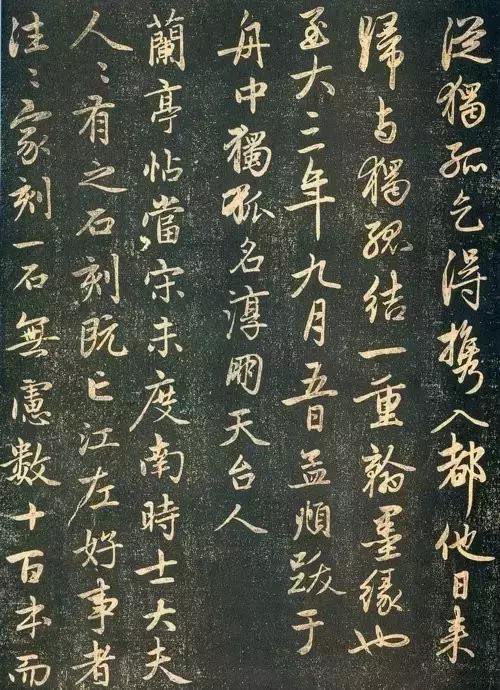
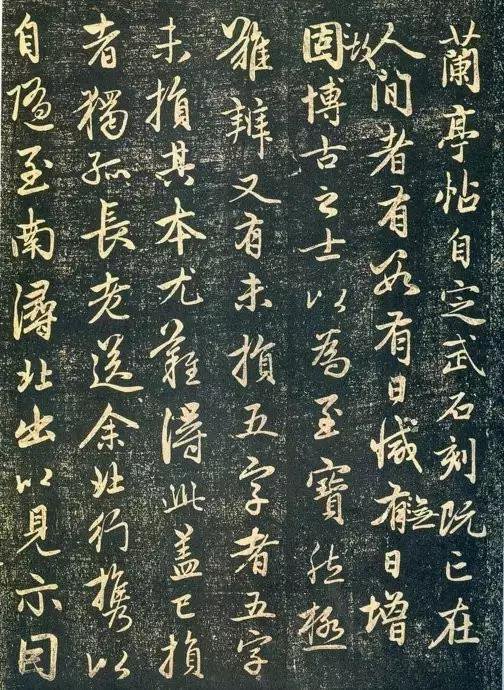
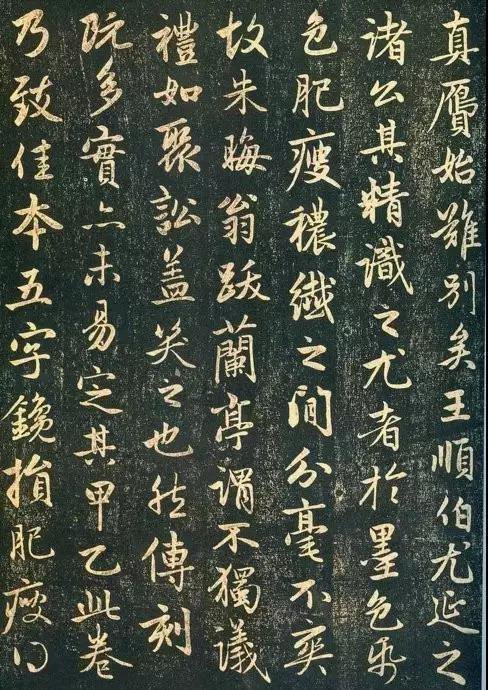
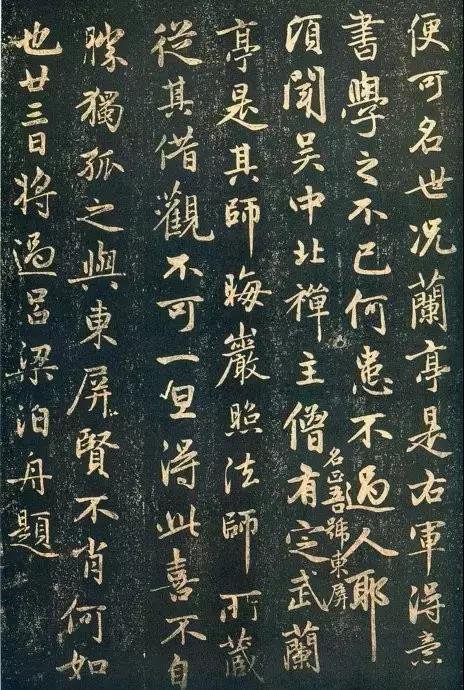
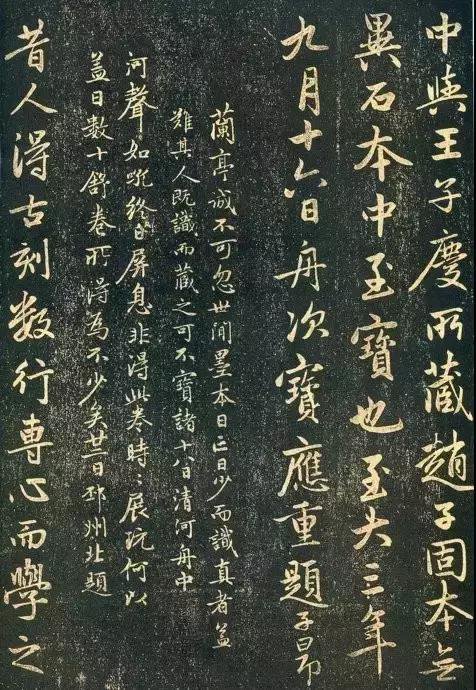
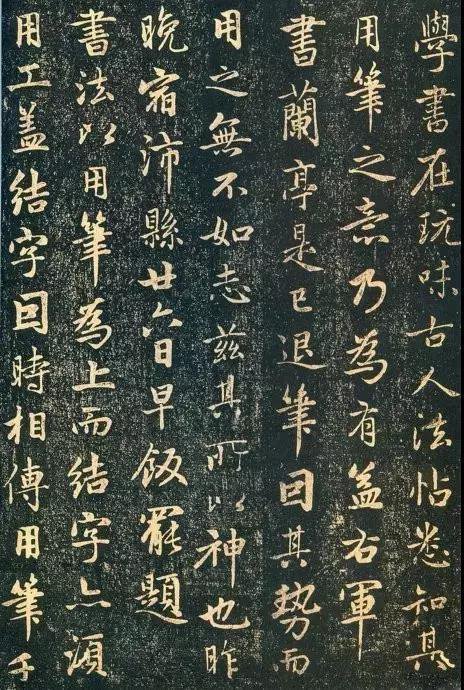
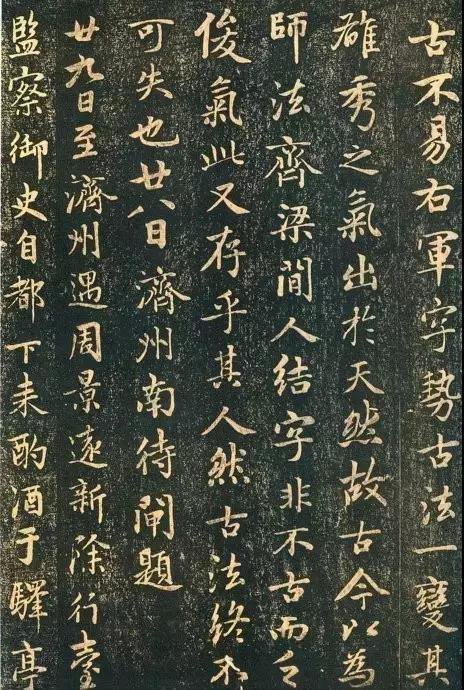
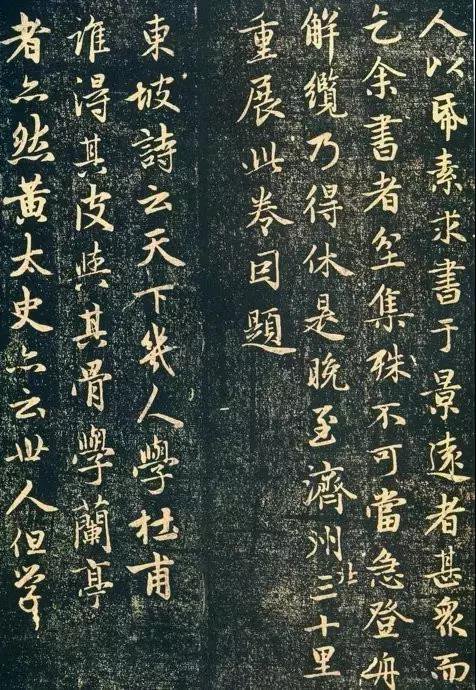
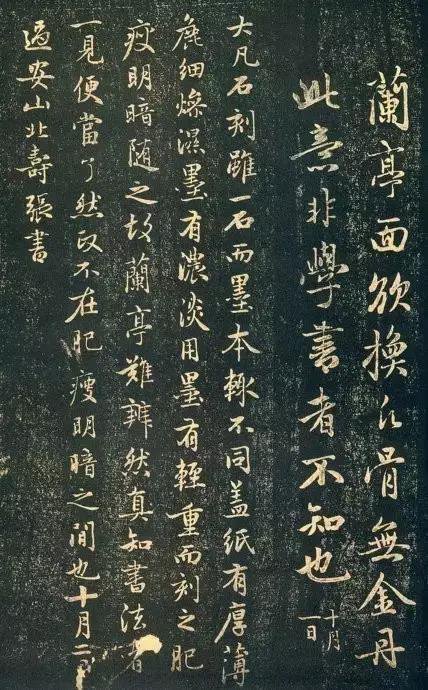
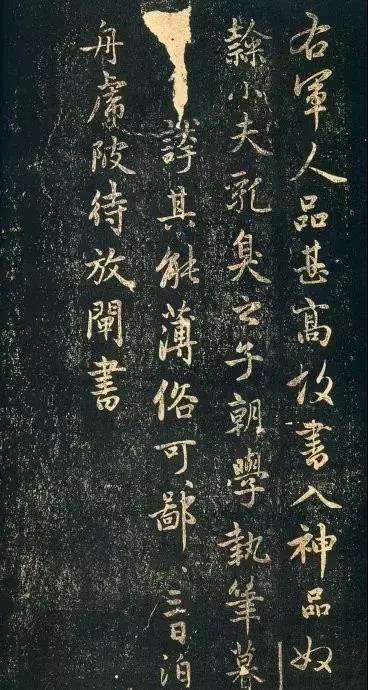
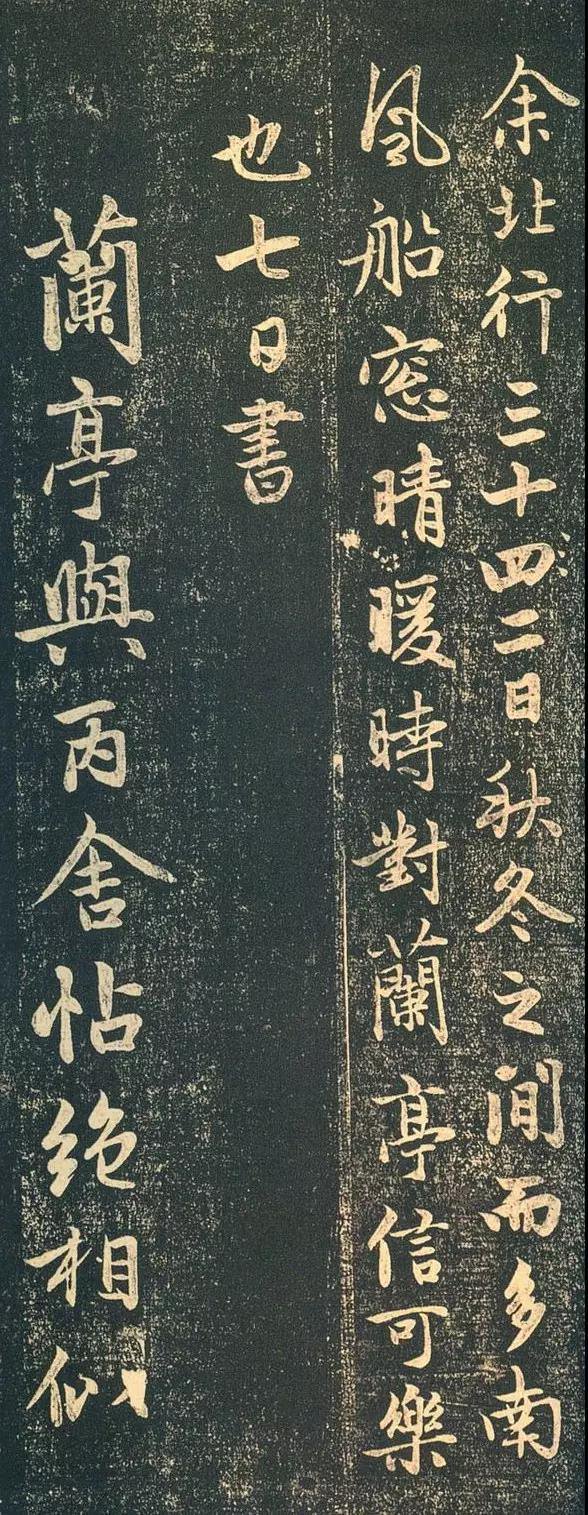
Original text: (first postscript)
Lanting Tie Zidingwu Stone Carving ① is dead, but there are countless people in the world. There are days when it decreases and there is no day when it increases, so the knowledgeable people regard it as a treasure. But it's extremely difficult to tell. There are also five characters that are not damaged. The five characters are not damaged, so the original is particularly rare. If this cover has been damaged, Elder Dugu sent me to the north and took it with me. Go to the north of Nanxun and come out to show you. Because he begged from Dugu, he brought it to the capital. When he comes back one day, he and Dugu will have a close relationship with each other. On September 5, the third year of the reign of Emperor Da Da, he was in the boat. Dugu's name is Chunpeng, and he is from Tiantai.
Note:
Wang Xizhi's "Lanting Preface" script has not been circulated since the Dingwu Stone Carving, and only a few rubbings of the Dingwu Stone Carving have survived in the world. And as time goes by, it will only become less and less, and it is impossible to increase it. Therefore, elegant scholars who like antiques regard it as the most precious rare treasure. However, it is extremely difficult to distinguish the authenticity of these preserved treasures. In particular, there is an undamaged version of the five-volume volume. Especially this five-character undamaged version is even rarer. One thing here is the damaged version of Wuzi. It was Elder Dugu who sent me to the north and he carried it with him. When we arrived north of Nanxun, he took it out and showed it to me. I begged for it from Elder Dugu and brought it to Dadu. If you return it someday, you can form a romantic marriage with Elder Dugu. On September 5, the third year of the reign of Emperor Da Da, I wrote it in the boat on the back of the volume. Elder Dugu’s name is Chunpeng. He is from Tiantai, Zhejiang Province.
【Annotation】
①Dingwu Stone Carvings: refers to "Dingwu Benlanting Preface". After Emperor Taizong of the Tang Dynasty obtained the authentic copy of "Lanting Preface", he ordered Ouyang Xun to copy it, engrave it on stone, and give it to his ministers. In the Five Dynasties, Liang moved his capital to Shibian. After Lu Deguang of Liaoye broke through the Jin Dynasty, he took this stone to the north and died of illness on the way. The stone was abandoned in the fox-killing forest and became the tiger-killing forest. The later stone was discovered and placed in Dingzhou. In the Tang Dynasty, the Yiwu Army was established in Dingzhou. In the Song Dynasty, the name of Yiwu was changed to Dingwu to avoid Taizong Zhao Guangyi's taboo. Therefore, this stone carving is called "Dingwu Lanting".
② Elder Dugu: That is Monk Dugu. His name was Chunming, a native of Tiantai, Zhejiang Province. He was good at calligraphy and had a collection of rare copies of "Dingwu Lanting".
Original text: (Second Postscript)
Lantingtie was written by all the scholar-bureaucrats when the Song Dynasty did not go to the south. Now that stone carvings are dead, good people in Jiangsu often carve one stone at home, without worrying about hundreds of copies, and it is difficult to tell the real ones from the fakes. Wang Shunbo ①, You Yanzhi ② all the princes, their insight is the most outstanding. Between the ink color, paper color, fat and thin, and slender, there is no feeling at all. Therefore, Zhu Huiweng ③ and Lanting said: "Not discussing etiquette alone is like gathering a lawsuit ④", which makes him laugh. However, since there are so many legends, it is not easy to determine the first and second. This volume is the best edition, with five characters missing, fat and thin winning. It is no different from the Zhao Zigu edition collected by Wang Ziqing⑤, and it is also a treasure among the stone editions. It was September 16th in the third year of the lunar calendar. Zhou Cibao should be re-titled. Zi Ang.
Note:
"Lanting Preface" The rubbings of the Dingwu stone carvings were made by almost everyone who was an official in the Song Dynasty before they crossed south. After the original stones of the Dingwu engraved editions disappeared, those good people in Jiangdong often engraved a piece of engraved stone for each family. You don't need to think about it to know that this will produce hundreds of rubbings, so the authenticity has been different since then. It's hard to tell the difference. Wang Shunbo, You Yanzhi and other gentlemen are outstanding figures among the skilled connoisseurs. The difference between ink color, paper color, fat and thin fonts, and pen thickness can be distinguished without any difference. Therefore, Zhu Xi said in his postscript to Lanting: "It seems that it is not just the ancients' explanation of etiquette. There are different opinions and no consensus." It seems to be a ridicule. However, since there are so many engraving versions, it is not easy to determine whether it is good or bad. This volume is really an excellent edition. Five characters have been damaged by chiseling, and the fatness and thinness of the handwriting are very appropriate. It is no different from the Zhao Zigu copy collected by Wang Ziqing. It is the supreme treasure among stone rubbings. On September 16, the third year of the reign, I sailed to Baoying and wrote this inscription and postscript again. Zi Ang.
【Annotation】
①Wang Shunbo: That is Wang Houzhi. The name is Shun Bo. A native of the Song Dynasty, he was a collector.
②You Yanzhi: That is, You Miao. The courtesy name is Yanzhi and the title is Suichu Layshi. A native of the Southern Song Dynasty, he specialized in calligraphy.
③Zhu Huiweng: That is Zhu Xi. His courtesy name is Yuanhui, his surname is Zhonghui, and his nicknames are Hui'an and Huiweng. He is a famous Neo-Confucian, thinker, philosopher, educator, poet, and representative of the Fujian school in the Southern Song Dynasty. He is known as "Zhu Zi" in the world.
④ Not only discussing etiquette is like gathering a lawsuit: It is not just the explanation of etiquette by the ancients, there are different opinions, endless debates, and no consensus. In ancient times, it was said that "discussing etiquette is like gathering a lawsuit." Li refers to the three rites, namely "Zhou Rites", "Yili", and "Book of Rites". However, "Yi Li" is difficult to understand, and Confucian scholars rarely understand it, so they cannot gather together to litigate. There are lawsuits and people argue, and it is difficult to determine right and wrong.
⑤Wang Ziqing: Wang Zhi. Ziqing, named Jingxi, was a connoisseur of calligraphy and painting in the early Yuan Dynasty. He was good at connoisseurship, rich in collecting, and familiar with the mounting technology of calligraphy and painting. The damaged edition of "Dingwu Lanting Five Characters" was collected by Zhao Zigu after his death.
⑥Zhao Zigu: That is Zhao Mengjian. His courtesy name was Zigu, his name was Yuzhai Jushi, he was a member of the Song clan, the eleventh grandson of Song Taizu, and Zhao Mengfu was his younger brother. A painter of the Southern Song Dynasty, he was good at poetry and prose, and his family was rich in collections. He once collected the damaged edition of "Dingwu Lanting Five Characters".
Original text: (Third Postscript)
The sincerity of Lanting cannot be ignored. In this world, there are fewer and fewer people dying every day, but it is difficult for those who know the truth. The person knows it and hides it, but he can't treasure it. On the 18th, I was in a boat on the Qinghe River.
Note:
The artistic value of "Lanting Preface" cannot be ignored. The ink rubbings that have been circulated in the world are disappearing day by day, and it is very difficult to identify and confirm them as authentic. Anything that can be identified as authentic has been collected by others. How can we not treasure it as a treasure? On the 18th, I traveled to Qinghe and wrote a postscript in the boat.
Original text: (Fourth Postscript)
The sound of the river is like a roar, and I hold my breath all day long. How can we solve the problem without having to play with this volume from time to time? After dozens of days, the scrolls are relaxed. The income is quite a lot. On the 22nd, it was the northern title of Pizhou.
Note:
The rushing water in the river was as loud as a roar, and no one spoke in silence on the boat all day long. If I didn't get this volume and read it and ponder it all the time, how would I be able to pass the time? I open the rewards dozens of times almost every day, and I get a lot of rewards. Inscribed in the north of Pizhou on the 22nd.
Original text: (Fifth Postscript)
In the past, people could get a few lines of ancient carvings and study them with concentration, and then they could be famous in the world. Kuang Lanting is a proud scholar of the Youjun ①. He has learned endlessly, so there is no need to worry about others. I recently heard that the master of Zen in the North of Wuzhong, the monk (named Zhengwu, nicknamed Dongping②), has Dingwu Lanting Pavilion, which is owned by his master Hui Yanzhao. It is impossible to borrow from it. Once you get this, you will be overjoyed. Duguzhi and Dongping are both virtuous and unworthy. On the 23rd, we will cross Luliang to Bozhou.
Note:
People in the past could obtain several lines of ancient inscriptions and study them with concentration, and then they could become famous in future generations. What's more, "Lanting Preface" is Wang Xizhi's proud work. If you continue to study it diligently, why worry about not surpassing others? Recently I heard that the monk (named Zhengwu, nicknamed Dongping), the master of Northern Zen in Wuzhong area, has a volume of "Dingwu Lanting", which is treasured by his master Hui Yanzhao. I wanted to borrow it from him to watch but couldn't. Today, once I received a gift from Elder Dugu, my joy was unbearable. Compared with the monk Dongping, there are so many differences in talents and morals between Elder Dugu and Monk Dongping. On the 23rd, I was about to pass Luliang and stopped the boat. I wrote this inscription.
【Annotation】
① Right Army: That is Wang Xizhi. The courtesy name is Yi Shao, and he is known as "Wang Youjun" because of his official position as General Youjun. A calligrapher of the Eastern Jin Dynasty, he is known as the "Sage of Calligraphy". Together with his son Wang Xianzhi, they are called the "Two Kings".
②Dongping: The person is unknown. According to Yunseng Dongping, there is also a volume of "Dingwu Lanting" in his possession. Zhao Mengfu wanted to borrow it from him for viewing, but he refused, so he complained.
③ Master Hui Yanzhao: Master of Seng Dongping, his identity is unknown. There is a volume of "Dingwu Lanting" in the collection, which was later passed down to Dongping.
④Unworthy: Bad conduct, no future.
Original text (sixth postscript)
When studying calligraphy, it is beneficial to meditate on the ancient writings and understand the meaning of the writing. Youjun Shulanting has withdrawn his writing①, but he used it because of its power, and it is nothing less than his ambition. This is why he is so good. Supei County last night. I’ll finish the question after breakfast on the 26th.
Note:
Learning calligraphy depends on carefully studying and appreciating the calligraphy models of the ancients, and gaining an insight into the meaning of their pens. Only then can you benefit. Wang Xizhi used an old pen to write "Lanting Preface". When writing, he complied with the style and characteristics of the brush, and he did not write inconsistently with his own mind and will. This is the reason why this Dharma calligraphy can be regarded as a masterpiece. I stayed in Pei County last night and wrote the inscription after breakfast on the 26th.
【Annotation】
①Return the pen: Use an old pen or a bald pen.
Original text: (Seventh Postscript)
Calligraphy relies on the use of a pen, but handwriting also requires use of handwork. The character Gai Jie has been passed down from generation to generation, and it has been difficult to use the pen through the ages. The style of Youjun's character has changed from the ancient method, and its majestic and elegant style comes from nature, so it is regarded as a follower in ancient and modern times. People from the Qi and Liang Dynasties were not old-fashioned in their knotting, but they lacked handsomeness. This was due to the person, but the ancient method cannot be lost. On the 28th, Jeju South Waiting Gate question.
Note:
In calligraphy, the use of pen is the first priority, and the structure of the characters also needs to be carefully arranged. Because the structure of characters will develop with the changes of the times, but the use of pen has not changed since ancient times. Wang Xizhi's brushwork and calligraphy made great changes to the ancient writing methods. The majestic beauty between his lines is completely natural, so people in the past and present regard it as a patriarchal style. The calligraphy of people between Qi and Liang in the Southern Dynasty was not unsophisticated in terms of knotting, but lacked elegance and elegance. This situation completely depends on everyone's understanding. But the ancient methods cannot be thrown away after all. Inscribed on the 28th while waiting for the gate to open in southern Jeju.
Original text: (Eighth Postscript)
On the 29th, I arrived in Jeju, where I met Zhou Jingyuan, the censor of Xinzhuxingtai Supervision. He came down from the capital and drank wine in the post office. There are many people who use paper to ask for books in Jingyuan, but there are so many people begging for the remaining books that they cannot be accepted. If you rush into the boat and untie the cable, you will have to rest. That evening, when I arrived thirty miles north of Jeju, I re-exhibited this volume because of the title.
Note:
Arrived in Jeju on the 29th. I met Zhou Jingyuan, who had just been awarded the official position of censor of Xingtai and came south from Dadu. We drank together in the post pavilion. There were so many people carrying papers to ask Jingyuan for calligraphy, and the people who begged me for books gathered together, which was really irresistible to me. He hurriedly boarded the ship and untied the cable and set off from the shore before he could give up. That night I arrived at a place thirty miles north of Jeju, and unfolded this volume of rubbings again, so I wrote these inscriptions.
【Annotation】
① Zhou Jingyuan: Zhou Chi. Jingyuan, named Jingyuan, was a calligrapher in the Yuan Dynasty and the second king of calligraphy masters. He was graceful and graceful. He is skilled in classics and well-known for his literary skills.
Original text: (Ninth Postscript)
Dongpo's poem goes: "How many people in the world learn from Du Fu, who can get his skin and bones." The same is true for those who learn from Lanting. Huang Taishi ③ also said: "People in the world only learn the orchid pavilion face, but they want to change their bones without the golden elixir." This meaning is not known to those who are not students of calligraphy. October 1st.
Note:
Su Dongpo said in his poems: "How many people in the world are learning from Du Fu? Who can learn the superficial and essence of him?" The same is true for learning to write "Lanting Preface". Huang Tingjian also said: "People in the world have only learned the surface of "Lanting Preface", and they want to reborn but can't find the good medicine." The truth is not something that people who study calligraphy cannot understand. October 1st.
【Annotation】
①Dongpo: Su Shi. His courtesy name was Zizhan, his nickname was "Dongpo Jushi", and he was known as "Su Dongpo" in the world. Famous writers, calligraphers, painters, lyricists, and poets in the Northern Song Dynasty, together with Huang Tingjian, Mi Fu, and Cai Xiang, are known as the "Four Masters of the Song Dynasty".
②Du Fu: Zi Zimei, a great poet of the Tang Dynasty. He called himself Shaoling Yelao and was known as "Du Shaoling" in the world. During the reign of Suzong, the official Zuo collected the relics. Later he entered Shu and served as a staff officer of Jiannan Jiedu Mansion. He was also a member of the school inspection department and Wai Lang, so he was also called "Du Shiyi", "Du Gongbu", etc. Later generations respected him as the "Sage of Poetry".
③Huang Taishi: Huang Tingjian. Luzhi, also known as Taoist of the Valley, was a poet, lyricist and calligrapher in the Northern Song Dynasty. He was one of the "Four Song Masters". Because he was an official in compiling the history of the country, Zhao followed the ancient method and called it "Tai Shi".
Original text: (Tenth Postscript)
Generally speaking, although stone carvings are made of one stone, the ink itself is always different. The covering paper is thick, thin, fine, dry and wet, the ink is thick and light, and the ink used is light and heavy. The fatness and thinness of the carving follow the light and dark, so it is difficult to distinguish the Orchid Pavilion. However, those who really know calligraphy will understand it as soon as they see it. They are not between fat and thin, light and dark. On October 2nd, I passed the Anshan North Shou Zhang Book.
Note:
Although all stone carvings have only one stone, the rubbings made from the original stone are different because the paper has different thickness, thickness, dryness and wetness, the ink has different shades, and the ink has different weights. The difference, and the depth and weight of the strokes on the stone carvings will change accordingly. Therefore, it is difficult to identify the authenticity of the many rubbings of "Lanting Preface" circulated. But those who really know the true meaning of calligraphy will know it at a glance, because the real secret does not lie in the fatness of the strokes and the depth of the strokes. Written on October 2nd after passing through Shouzhang County north of Anshan.
【Annotation】
①麁: vulgar "rude" character, the same as "rough".
Original text: (Eleventh Postscript)
Youjun's character is very high, so his book is of divine quality. The slave boy, the son of a stinking child, writes in the early morning and boasts of his ability in the evening. It's vulgar and despicable. We parked our boat at Hupei for three days and waited for the book to be released.
Note:
Wang Xizhi's character is very noble, so his calligraphy is among the best. Those ordinary people with low status, young children who have just learned how to hold a pen in the morning, have already begun to boast about how great they are in the evening. They are so shallow and vulgar that they are despised and looked down upon. On the third day, the ship was anchored in Hupi, waiting for the lock to be released to write.
Original text: (Twelfth Postscript)
I traveled north for thirty-two days. During autumn and winter, there was more southerly wind. The boat window was sunny and warm. I looked at the Orchid Pavilion and felt happy. Seven Days Book.
Note:
I took a boat and traveled north for thirty-two days. During the autumn and winter, the south wind often blew, and the weather outside the boat window was sunny and warm. It was always a pleasure to read the "Preface to the Orchid Pavilion" with the scroll unfolded and face to face. Written in seven days.
Original text: (Thirteenth Postscript)
Lanting and Bingshetie are absolutely similar.
Note:
"Lanting Preface" is very similar to "Bingshe Tie".
【Annotation】
① Bingshe Tie: "Bingshe Tie in Tomb Field" is referred to as "Bingshe Tie". It is said that it was written by Wang Xizhi when he came to Zhongyao.
appendix:
The Dugu version of "Dingwu Lanting" that has been handed down from generation to generation has inscriptions and inscriptions by Wu Shuo, Zhu Dunru, Qian Xuan, Xian Yushu, Ke Jiusi, Xu Lin, Dong Qichang and others before and after the Zhao post. collect.
After the thirteenth year of Jiaqing (1808 AD), this volume and other inscriptions and postscripts were destroyed by fire, and the fragments were converted into volumes. In modern times, they were brought to Japan and are now in the collection of the Tokyo Museum.
Fragment of "Thirteen Postscripts to the Preface to Lanting" by Zhao Mengfu (selected pages)
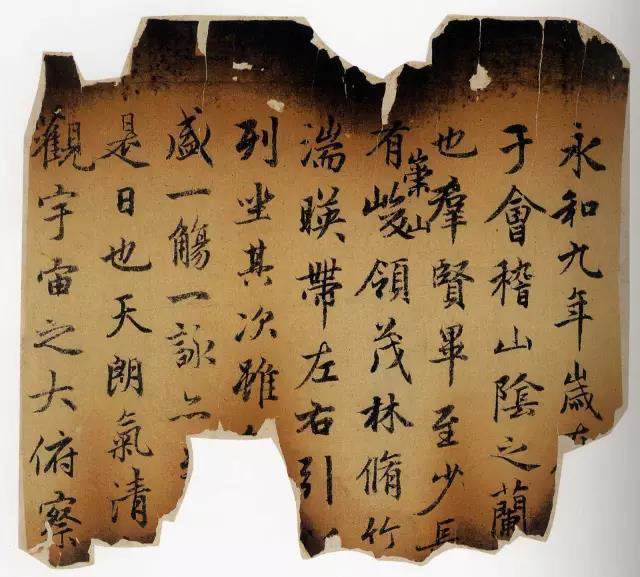
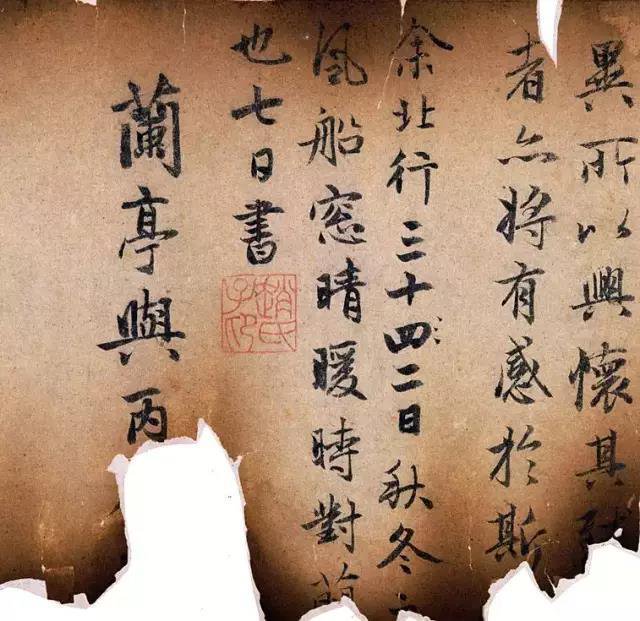
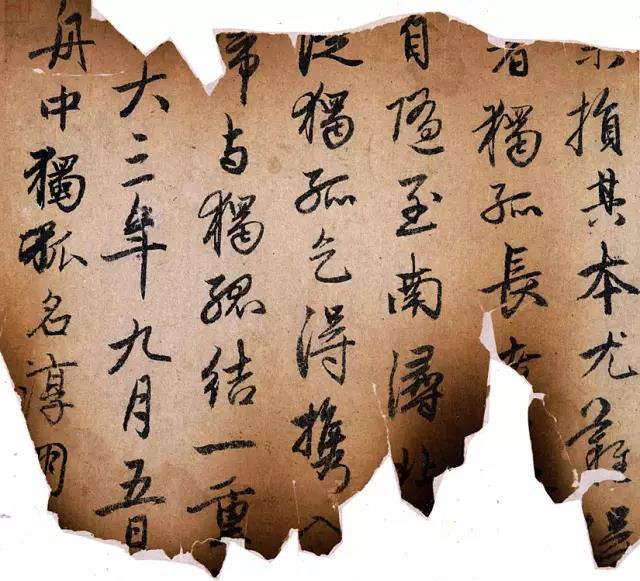
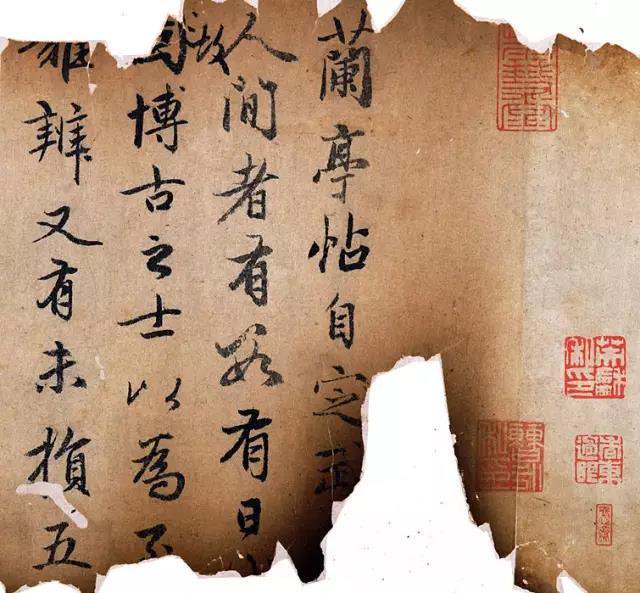
In this volume, 3 pieces of "Dingwu Lanting" remain, 14 pieces of Zhao's postscripts and Lin's manuscripts remain, and 10 pieces of inscriptions and postscripts by each family remain.
Fortunately, Feng Quan used Zhao's "Thirteen Postscripts of Lanting" and the ink on the rubbings to inscribe them into "Kuaixuetang Tie". Together with Liu Yuruo's meticulous carving skills, "Thirteen Postscripts of Lanting" can still be appreciated from the rubbings today. The whole picture is a great blessing.

